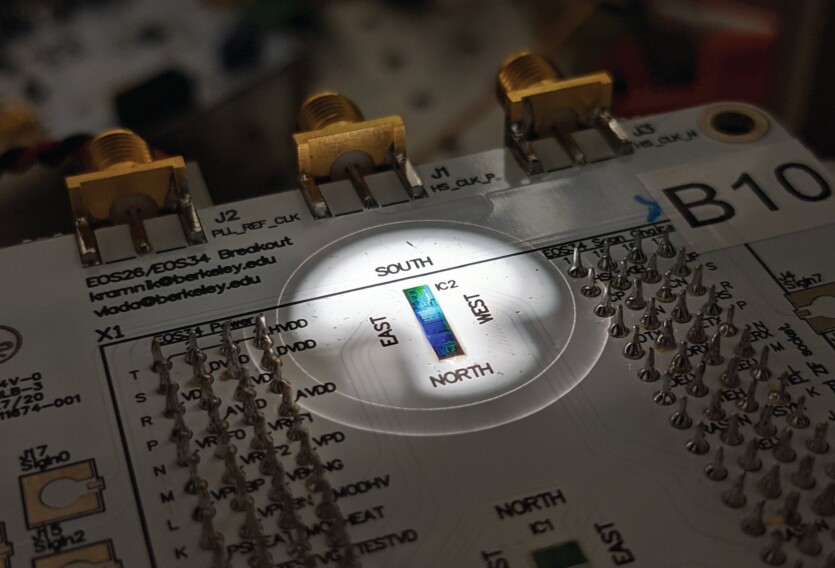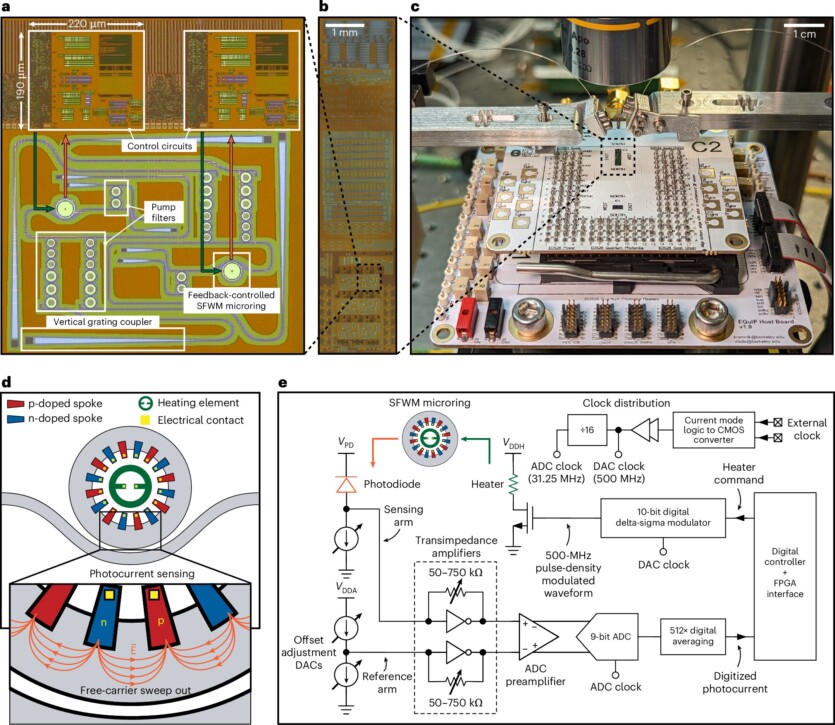
American researchers from the Boston University, the University of California, Berkeley, and Northwestern University have announced the creation of the world’s first electron photon quantum chip on a crystal.
The device includes 12 independent, synchronized quantum light sources and stabilizing electronics placed on a 45 nanometer crystal. This makes it possible to obtain reliable streams of correlated pairs of photons and opens the way to the creation of scalable processes for the production of chips of the type «quantum light factory» and systems consisting of a large number of such chips that work together.
«Quantum computing, communications, and sensing are on a multi-year journey from concept to reality. This is a small step along the way, but an important one, as it shows that we can create reproducible quantum systems that are controlled in industrial semiconductor manufacturing facilities», — explains lead author of the study from Department of Electrical and Computer Engineering, Boston University Milos Popovic.
Quantum computing and communication technologies require constant photon flux. To ensure this, American researchers have placed 12 tiny «quantum light factories» on a chip, each of which is no more than 1 millimeter in size.

These fabs are powered by a laser and generate correlated pairs of photons using micro-ring resonators. These resonators are extremely sensitive to temperature fluctuations and deviations in the manufacturing process, which can affect for stable light generation.
To circumvent these limitations, the researchers integrated a real-time stabilization system for quantum resonators into the chip. Photodiodes were integrated into each resonator to detect inconsistencies with the incoming laser radiation, while built-in heaters and control electronics continuously corrected any temperature deviation.
Each resonator must remain synchronized with the incoming laser radiation even in the presence of temperature drift and interference from neighboring devices, including eleven other photon pair sources on the chip. Because the chip uses built-in feedback to stabilize each source, it behaves predictably despite temperature changes and manufacturing deviations, a critical requirement for scaling quantum systems.
The results of the study are published in the journal Nature Electronics
Source: TechXplore

Spelling error report
The following text will be sent to our editors: